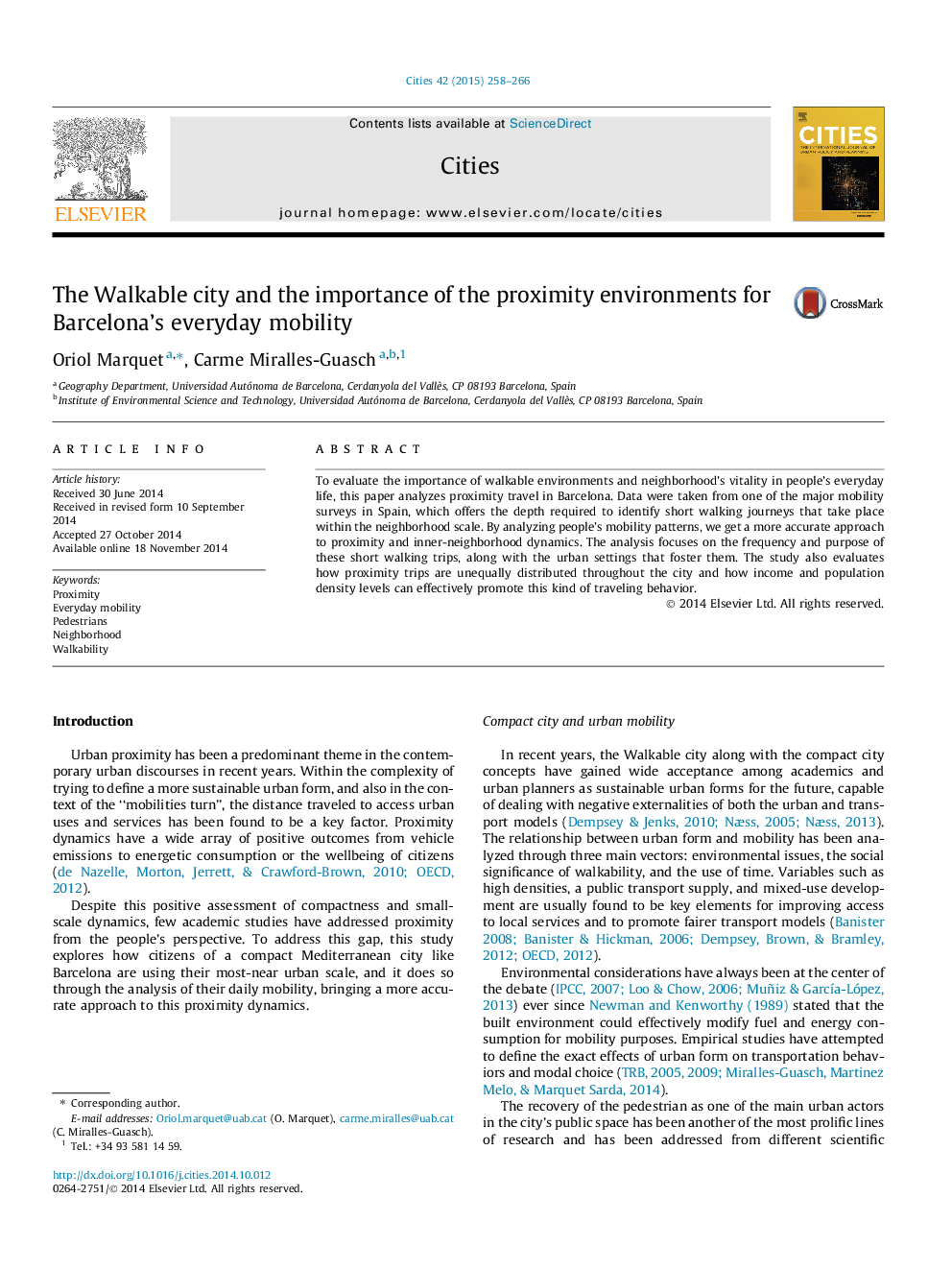| Article ID | Journal | Published Year | Pages | File Type |
|---|---|---|---|---|
| 1008294 | Cities | 2015 | 9 Pages |
•We analyze the use of short walking trips in the city of Barcelona.•We test the importance of density and income at determining proximity mobility.•One out of four trips made in the city is made by walking and takes less than 10 min.•Income and socioeconomic variables are stronger explanatory factors than density and built environment.
To evaluate the importance of walkable environments and neighborhood’s vitality in people’s everyday life, this paper analyzes proximity travel in Barcelona. Data were taken from one of the major mobility surveys in Spain, which offers the depth required to identify short walking journeys that take place within the neighborhood scale. By analyzing people’s mobility patterns, we get a more accurate approach to proximity and inner-neighborhood dynamics. The analysis focuses on the frequency and purpose of these short walking trips, along with the urban settings that foster them. The study also evaluates how proximity trips are unequally distributed throughout the city and how income and population density levels can effectively promote this kind of traveling behavior.
